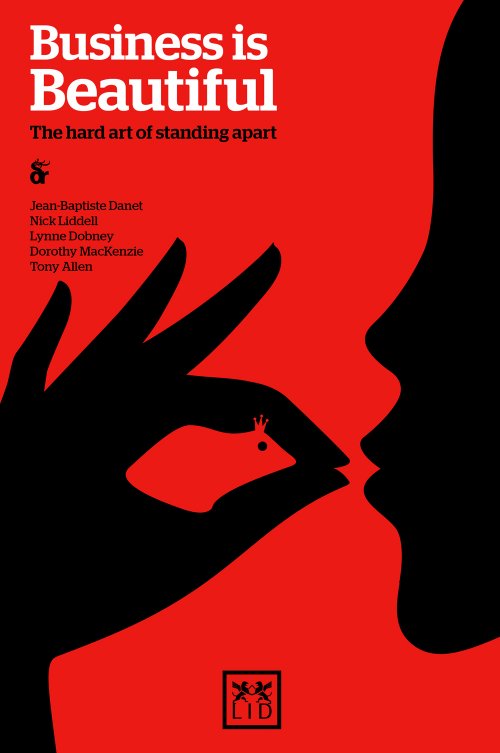
Book Review: Business is Beautiful: The hard art of standing apart
Hannah Hallam finds that the arts sector is already ‘standing apart’ according to this guide to alternative measures of success in business.
I enjoy reading books about business; I’m fascinated about the success of others and their stories and I read them because I want to be inspired. Despite the title of this book, which certainly didn’t appeal to me, and the retro styling which reminded me of a school library book, I still had high hopes from this book’s five authors and their “enlarged concept of business”.
The authors all work for Dragon Rouge, a global design, brand and innovation business. The book aimed to showcase five key hallmarks of global business “the unmeasurable drivers of success” – Integrity: building around a purpose, embracing sacrifice, being authentic, committing openly; Curiosity: exercising imagination; redefining convention, encouraging challenge, learning how to fail; Elegance: pleasing through the economy, designing with empathy, demonstrating poise, inviting interpretation; Craft: connecting through stories, applying the human hand, developing a signature style, creating a sense of theatre and Prosperity: asserting influence, establishing a legacy, valuing what matters, caring about people.
At the start of the book the authors propose the questions should business and pleasure mix? Should science and art be combined? And as most people working in the Arts know, this is a resounding ‘yes’. In fact, I doubt it’s a new concept to many industries and entrepreneurs however it seems that this might be the first time that it’s been illustrated in detail. As the book takes you through each aspect there are case studies of businesses and entrepreneurs from around the globe whose values, such as the hallmarks listed above, illustrate their success beyond just seeking profit.
Most of the case studies are from niche businesses, of varying sizes and status, including Icebreaker, an outdoor clothing made from Merino wool fabrics who not only want to provide excellent quality clothes for trekking but clothes who bring together people and nature – just how it feels when you’re out pursuing adventure in the great outdoors.
Another study was of 3M, a company known for its innovation and wide range of products (including the wonder that is Post-it notes). They encourage networking across the labs, sharing expertise between its "blue collar scientists". The company also provides opportunities for employees to spend time on their own ideas for potential future products. By encouraging challenge and seeking innovation, employees and the business thrives. Other case studies included are from BMW, Conde Nast and two interesting creative businesses: Story, an American retail media company and Threadless, a community based t-shirt design company.
I found that it was only really the case studies that held my interest throughout the book. My overwhelming thought whilst reading was that nothing they were telling me was new: for example, using the term ‘people’ instead of ‘consumers’ to help you to develop relationships with your customers. So did this book inspire? Not really. Was it relevant for the arts? Partly, however I think that most arts organisations are using these hallmarks already. It is our instinct to exercise our imagination, to redefine convention, invite interpretation and establish a legacy. I could quite easily see a book that illustrates these same hallmarks written by artists, directors and practitioners, and call it ‘business as usual.’
Hannah Hallam is Head of Business Development at Curve Theatre, Leicester
www.curveonline.co.uk
Join the Discussion
You must be logged in to post a comment.